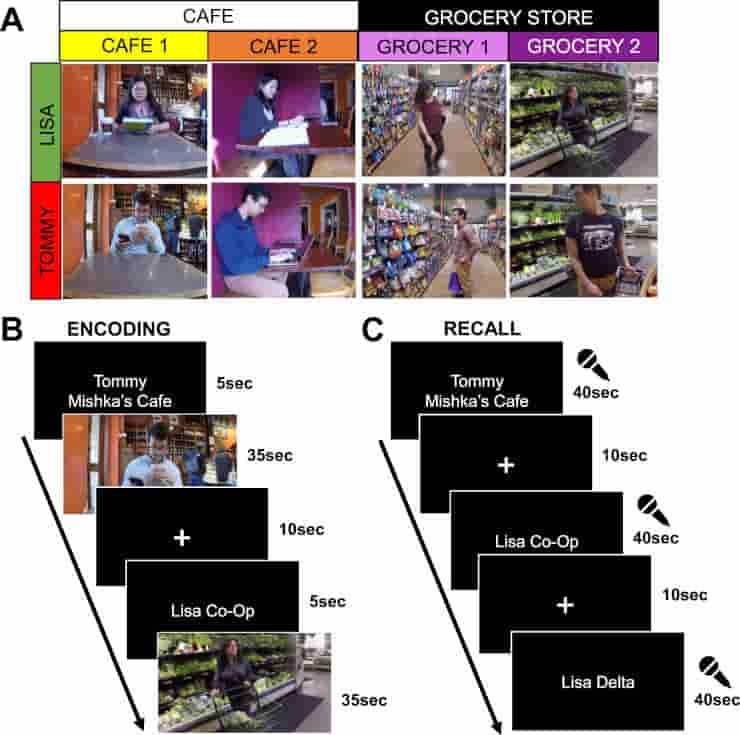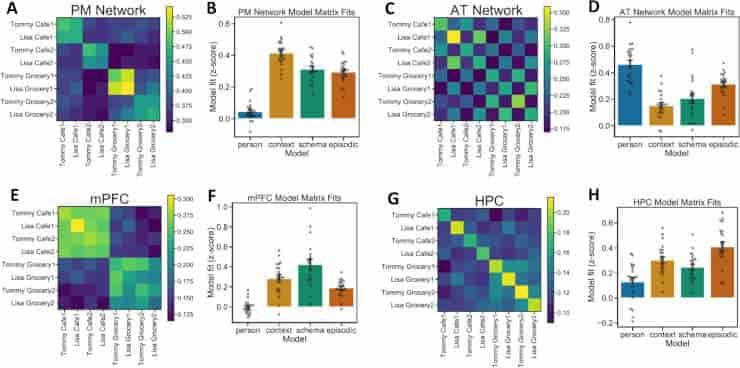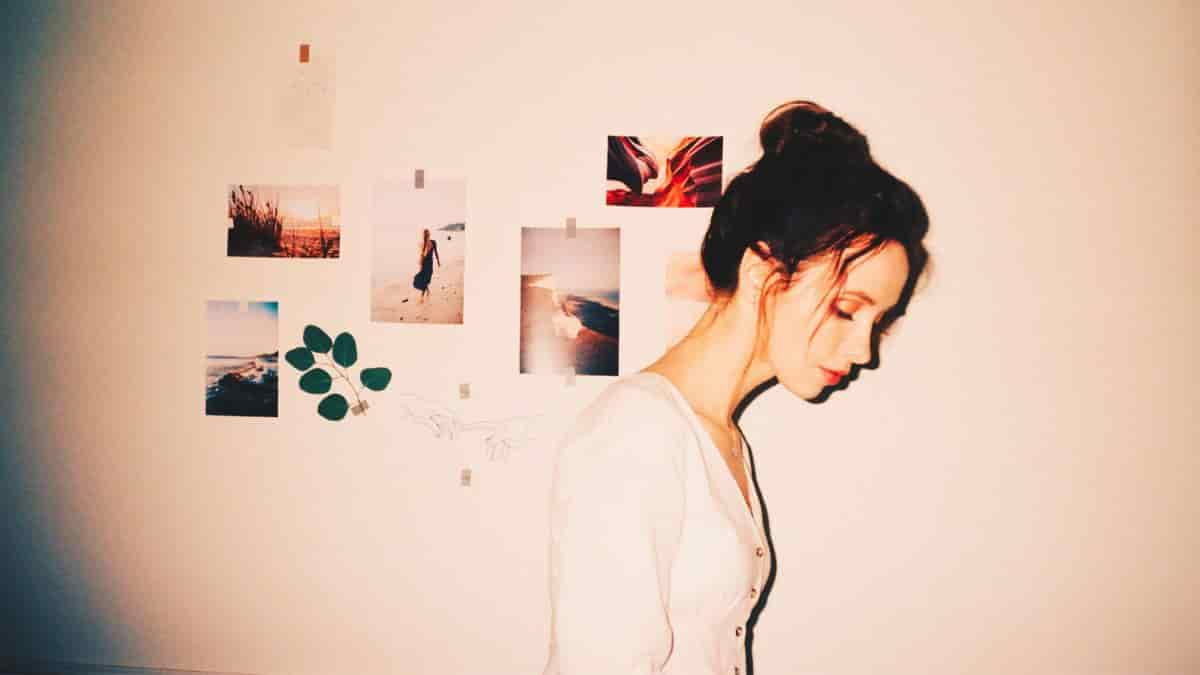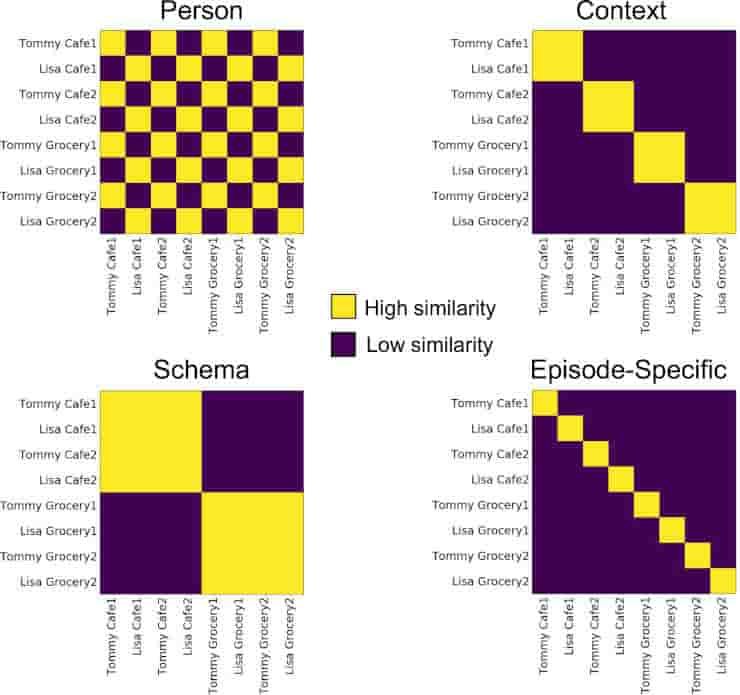Mundane scenes have clarified how the brain uses memory in a new study. Researchers used functional MRI scanners to monitor subjects’ brains while watching short videos of real-life scenes. People working on laptops in a cafe or shopping in a supermarket were examples of this.
“They were very ordinary scenes. No car chases or anything,”
said Zachariah Reagh, assistant professor of psychological and brain sciences at Washington University in St. Louis.

The research participants then described the scenes in as much detail as possible. The mundane snippets led to intriguing discoveries, such as how different brain parts collaborated to understand and remember a situation.
Anterior Temporal Network
Networks in the temporal lobe’s anterior region, a part of the brain long known to play an important role in memory, remained focused on the subject regardless of their surroundings.
However, the posterior medial network, which includes the parietal lobe at the back of the brain, was more concerned with the environment. According to Reagh, these networks then sent information to the hippocampus, which combined the signals to form a coherent scene.
Previously, researchers studied the different building blocks of memories using very simple objects and scenarios, such as a picture of an apple on a beach. But life isn’t that simple.
“I wondered if anyone had done these types of studies with dynamic real-world situations and, shockingly, the answer was no,”
said Reagh.
Encoding-retrieval Pattern Similarity

(A, B) Posterior Medial Network pattern similarity results most strongly fit the Context model matrix. (C, D) Anterior Temporal Network pattern similarity results most strongly fit the Person model matrix. (E, F) Medial prefrontal cortex pattern similarity results most strongly fit the Schema model matrix. (G, H) Hippocampus pattern similarity results most strongly fit the Episodic model matrix.
Credit: Nat Commun 14, 1279 (2023) CC-BY
According to the new research, the brain creates mental sketches of people that can be moved from one location to another, similar to how an animator can copy and paste a character into different scenes.
It may seem counterintuitive that your brain can create a sketch of a family member and move it around, but it is extremely efficient, Reagh said.
Some subjects remembered the café and grocery store scenes more completely and accurately than others. Reagh and coauthor Charan Ranganath of the University of California, Davis discovered that people with the best memories used the same neural patterns when recalling scenes as they did when watching the videos.
“The more you can bring those patterns back online while describing an event, the better your overall memory,”
he said.
Event Representations Evolve
According to Reagh, it is currently unknown why some people appear to be more adept than others at reproducing the thought patterns required to access memory. However, it is obvious that many things can get in the way. When trying to retrieve a memory, he says, “a lot can go wrong.”
Even memories that seem crisp and vivid may not actually reflect reality.
“I tell my students that your memory is not a video camera. It doesn’t give you a perfect representation of what happened. Your brain is telling you a story,”
he said.
These findings fill a critical gap in previous research on event cognition and memory by demonstrating how the complementary functions of different cortico-hippocampal networks allow the brain to construct and reuse mental representations of event components across different episodic memories.
In future, Reagh plans to study the brain activity and memory of people watching more complicated stories.
Reference:
- Reagh, Z.M., Ranganath, C. Flexible reuse of cortico-hippocampal representations during encoding and recall of naturalistic events. Nat Commun 14, 1279 (2023).
Last Updated on September 20, 2023

